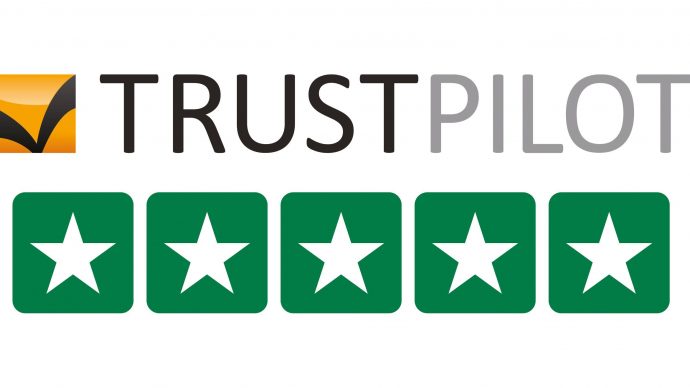When I first began using cannabis almost a decade ago, I found it worked wonders for my anxiety. Back then, it didn’t really matter which strain I was smoking—cannabis almost always helped regardless of set, setting, dose, or strain.
But as I got older, things got more complicated. I began to notice that certain strains made me more anxious than others. High doses made me paranoid. Using cannabis with unfamiliar people or in unfamiliar places almost always made me hypervigilant, self-conscious, and on edge.
Instead of taking multiple bong rips of potent strains like Original Glue and GSC, I moved toward strains with equal levels of THC and CBD—and taking just a few hits off a bubbler. I’ve found 5mg THC edibles to be a far better experience than one with 10-20mg THC. And instead of wake-and-baking with high-THC flower, I start my day with a CBD tincture.
Cannabis is complicated, and so is anxiety. Your ideal strain, product, dose, and regimen may not look like mine, and you should expect your relationship with cannabis as an anti-anxiety medicine to shift over the years. Anxiety evolves and changes, and so might how you treat it. There are also many different types of anxiety, and cannabis may affect each differently.
This guide is meant to help you understand your options. Finding the perfect product and routine for you will ultimately require personal experimentation, and we’ll walk you through all the first steps to get started.
Research on marijuana and anxiety

When using cannabis for anxiety, research suggests that lower doses may offer greater therapeutic benefit. While this ideal dose differs from person to person, it’s generally recommended to start with a low dose (such as 2.5mg of THC) and gradually increase the dose—ideally adding just another milligram or two—until you feel optimal symptom relief. (Leafly)
Cannabis is relaxing. Well, it should be, but if you’ve ever smoked a little too much or underestimated an infused edible, you know quite well that THC can sometimes turn on this reputation.
When it comes to high-THC cannabis and anxiety, there’s one thing to keep in mind based on research: At lower doses, cannabis seems to help anxiety; at higher doses, it seems to worsen it. So if opting for a high-THC variety, be sure to pay close attention to your dose (more on that below). However, high doses of CBD appear to reduce anxiety.
So why does cannabis soothe anxiety at some doses and exacerbate at others? Answering that requires a closer look at the biological system cannabis primarily interacts with: the endocannabinoid system (ECS).
The ECS is a vast system of receptors found throughout each of our bodies: in our brains, organs, guts, skin—these cannabinoid receptors are widespread and play an important role in ensuring that the body is operating in healthy balance. Our bodies naturally produce cannabis-like compounds—called endocannabinoids—that act similarly to cannabis compounds and also interact with the ECS, but sometimes their production goes awry. That’s where cannabis comes in as a potential therapy.
Studies show that the endocannabinoid system plays an important role in regulating anxiety, fear, and stress responses by regulating our behavioral response to stressful stimuli. Notably, cannabinoid receptors are abundant in areas of the brain involved in anxiety processing such as the hippocampus, prefrontal cortex, and areas of the amygdala. These studies also explain how THC can have opposing effects on anxiety as dosage affects neuron activity differently via cannabinoid type 1 receptors.
Another study published in Jan. 2020 showed that the endocannabinoid 2-AG (which activates the same receptors as THC) reduced anxiety-inducing connections between the amygdala and frontal cortex, suggesting another mechanism by which cannabis relieves anxiety in certain doses.
Cannabis terpenes are another area of interest when it comes to unveiling answers around the plant’s anti-anxiety effects. Terpenes are fragrant oils produced by the plant that make up its aroma, and researchers are exploring to what degree they provide additional therapeutic benefits. For example, the terpene limonene has been studied for its anti-anxiety benefits. Further research is needed to understand how individual terpenes impact the overall therapeutic experience of cannabis.
Does marijuana interact with anti-anxiety medication?
When it comes to mixing cannabis with other anxiety drugs, there are a few things to consider.
There hasn’t been much research investigating the interplay of cannabis and anxiety medications, but based on available studies and patient reports, we have a sense for which medications are riskier than others when it comes to mixing. Due to the lack of extensive research, it is advisable to first consult your doctor before combining cannabis and other medications.
SSRIs (selective serotonin reuptake inhibitors)—like Prozac, Paxil, Celexa, Zoloft, and Lexapro—are among the most common prescriptions for anxiety. Very few adverse interactions between cannabis and SSRIs have been reported by patients. This also seems to be the case with NDRIs (norepinephrine and dopamine reuptake inhibitors) like Wellbutrin, Aplenzin, and Forfivo.
Other medications call for greater caution as cannabis could amplify adverse side effects such as increased heart rate and blood pressure. These higher-risk combinations include:
Sedatives (e.g., Xanax, Klonopin, Ambien)
Tricyclic antidepressants (e.g., imipramine/Tofranil, amitriptyline, doxepin, trimipramine/Surmontil)
MAOIs (e.g. tranylcypromine/Parnate, phenelzine/Nardil, isocarboxazid/Marplan)
Another consideration is how cannabis may complicate symptom tracking. If you’ve just started taking anti-anxiety medication, you may want to hold on using cannabis so you can clearly see whether your anti-anxiety medication is working on its own.
Find the right cannabis product for anxiety
Stepping into a cannabis shop full of bud, edibles, oils, lotions, and capsules can be overwhelming for someone new to cannabis. Where do you even begin?
To summarize the general effects of different cannabis consumption methods and product types:
- Inhaled methods (vaporization and smoking) offer the most immediate relief, but the effects don’t last as long as ingestible methods.
- Ingestible methods (edibles, tinctures, capsules, etc.) take a while to kick in, but offer longer-lasting effects.
- Inhaled and ingestible cannabis should both be dosed with caution, but edibles especially require care as their effects can be intense and last several hours if too large of a dose is consumed.
Dosing marijuana for anxiety
Dosing guidelines for cannabis varies depending on two things:
- How you consume it
- The THC and CBD levels of your product
Dosing CBD
High-CBD products are a highly recommended starting point. Not only has CBD been found to effectively relieve anxiety, it’s also non-intoxicating so you don’t have to be as careful about dosing as you have to be with THC products.
With CBD oils and edibles, consider starting with 10mg and increase or decrease your dose until you’ve found the sweet spot for your symptoms. Or puff on a CBD vape or CBD-rich flower until you feel anxiety starting to lift.
Dosing THC
If you want to fold a little THC in, here’s what you should know about dosing:
- If you’re ingesting it, the dose will usually be written in milligrams (mg). For example, you might find edibles that contain 10mg of THC or CBD per serving.
- A liquid tincture may show the total milligrams per bottle and suggest a serving in milliliters. It may recommend taking one or two droppers-full.
- Inhaling via smoking or vaporization is a little different—flower and oils typically present potency as a percentage by weight. So a flower may have, for example, 16% THC, while an oil could contain somewhere around 80% THC. New consumers should aim for smaller THC percentages and higher CBD percentages.
To reiterate, someone using cannabis for anxiety should start with a small dose.
f you buy a 10mg THC edible, take half or a quarter of it to start—you can always add more if you’re not feeling anything in an hour or two, but undoing overly intense effects is an entirely different (and difficult) challenge.
Likewise, with flower or vape oils, take just a small puff and wait.
You might even consider microdosing cannabis—that is, taking a very small dose (such as 2.5mg THC)—one that’s too low to induce any euphoric effects, but still provides benefits by stimulating our natural endocannabinoid system.
Making cannabis helpful, not harmful
Cannabis is a tool, not a cure. Like other medications prescribed for anxiety, cannabis can be helpful in dulling symptoms of anxiety, allowing us the ability to functionally move from day to day and foster healthy habits.
Ideally, cannabis will ease stress and motivate you to take care of yourself. It can spark creativity and curiosity, fueling projects and hobbies that help you stay present. It can inspire you to cook a healthy dinner that tastes ridiculously good after a bowl of Purple Kush. It can ignite interest in getting outdoors with friends and family, or allow us to sit in meditation for a few minutes each day.
That’s not to say cannabis has to motivate you to join a gym, create art, hike a mountain, or be around other people in order to help you. Sometimes, relaxing with your favorite strain and a video game is exactly what we need, especially when we feel overworked and burnt out.
When using cannabis for anxiety, take note of how you’re using it. Honestly assess whether it’s helping you achieve your goals—or if it’s enabling you to avoid them.
Source: Leafly (Bailey Rahn)
 Based on +200
reviews
Based on +200
reviews

